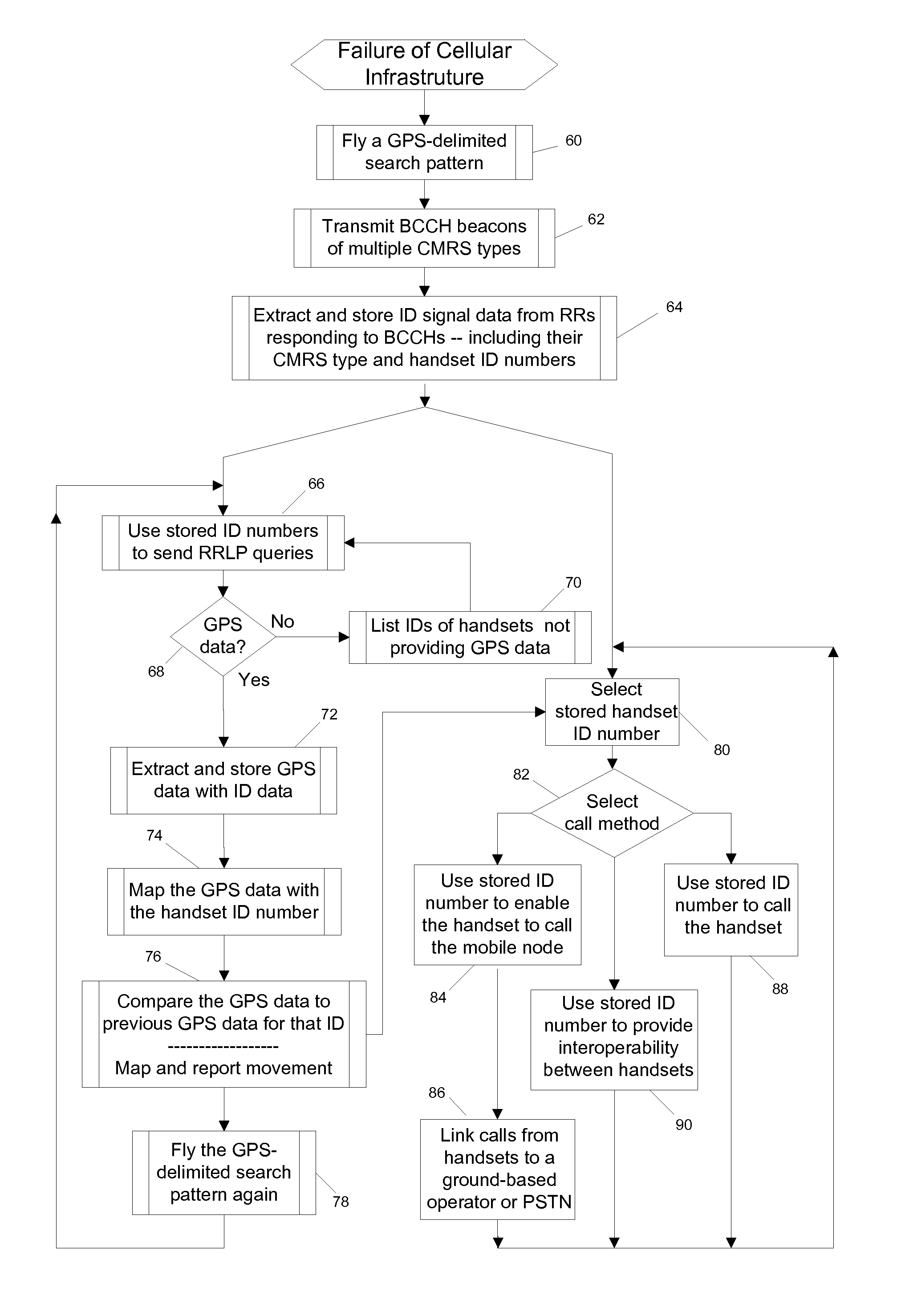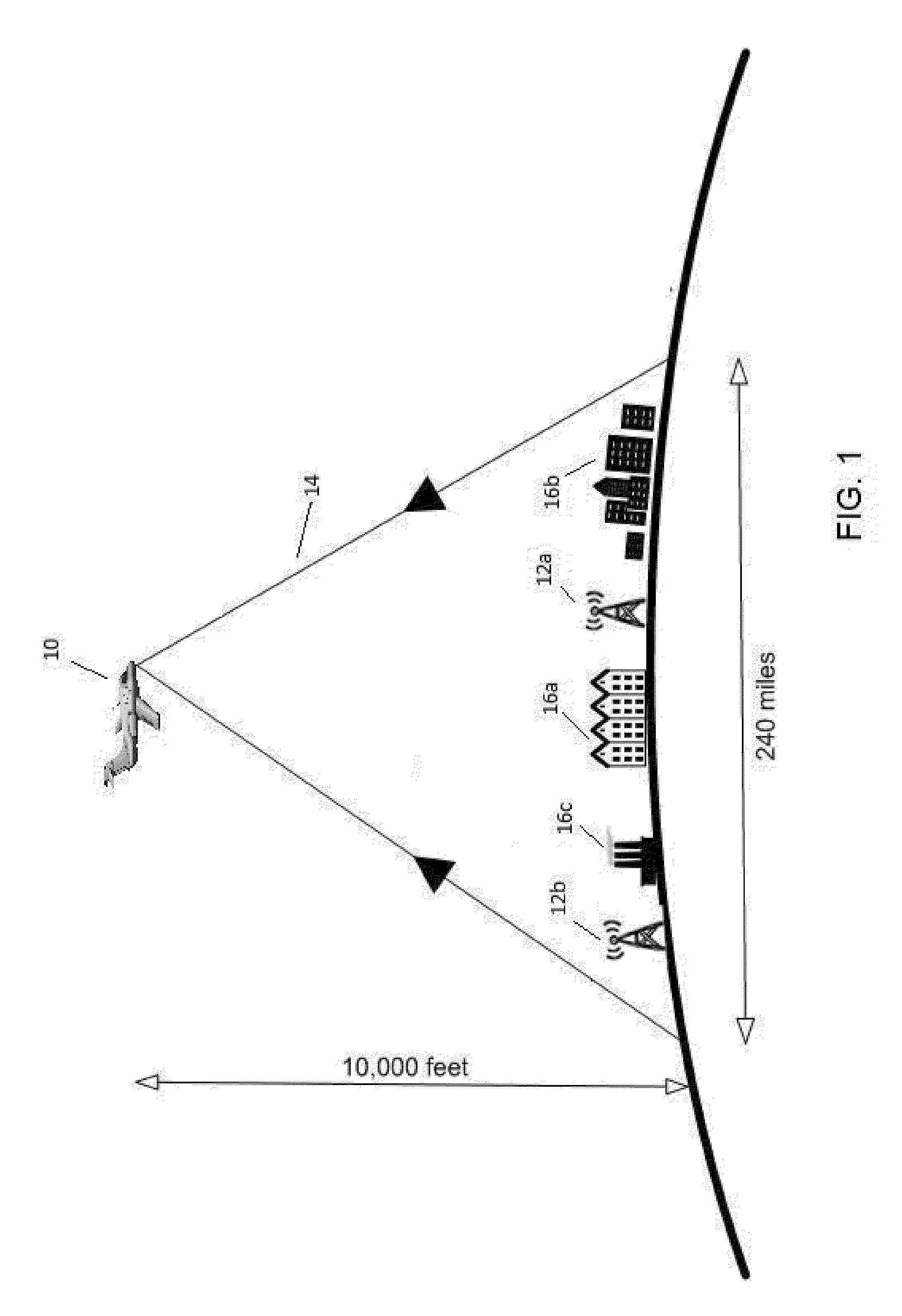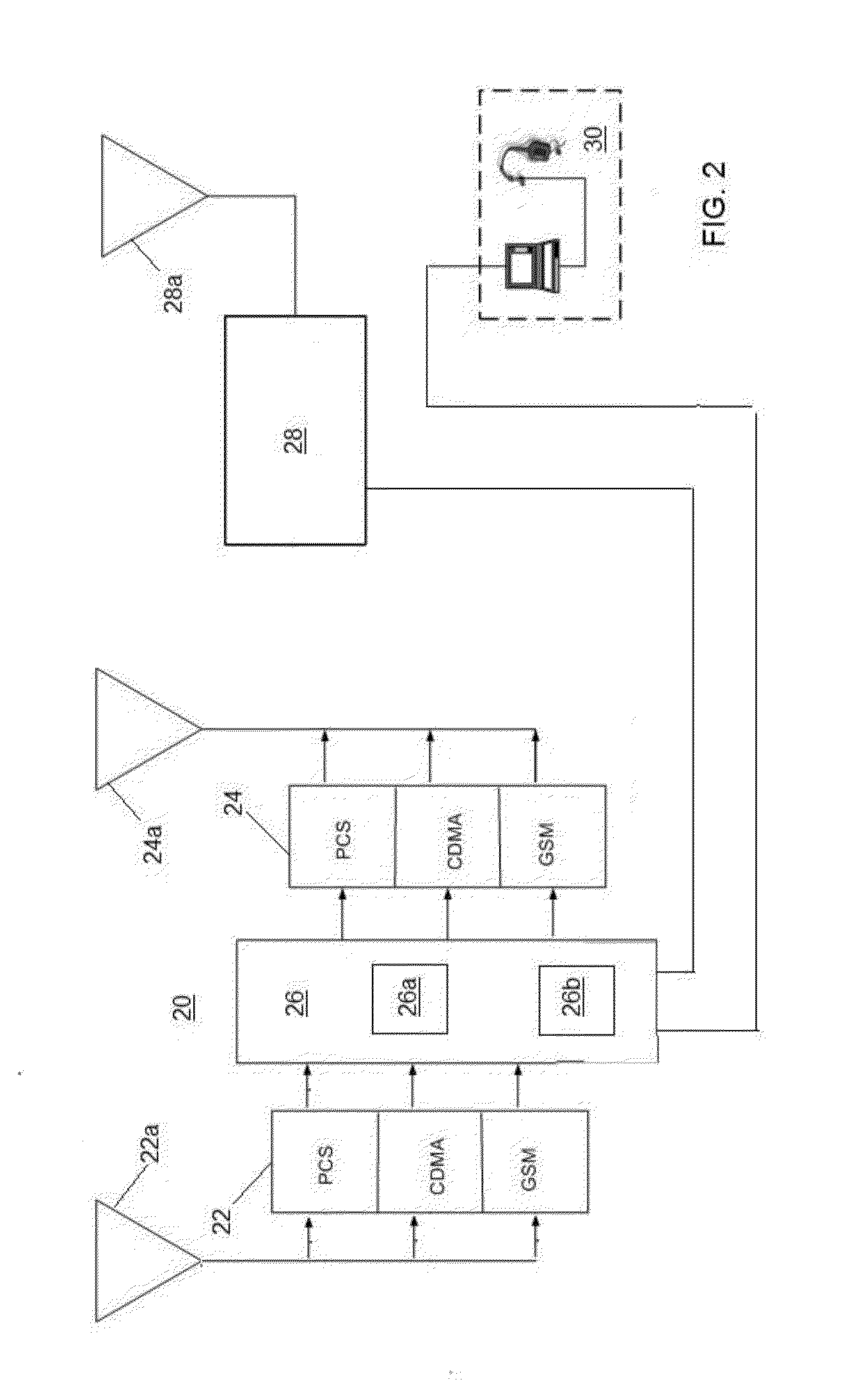Mobile cellular node method and apparatus for emergency relief and rescue
a mobile cellular node and emergency relief technology, applied in the field of commercial mobile radio services (cmrs) networks, can solve the problems of urban rooftop cellular crms sites and their microwave and pstn interconnect equipment being physically vulnerable to fire, wind and flood, and likely to remain out of service for a protracted period of time, so as to increase the node's call handling capacity
- Summary
- Abstract
- Description
- Claims
- Application Information
AI Technical Summary
Benefits of technology
Problems solved by technology
Method used
Image
Examples
Embodiment Construction
[0027]In accordance with the invention, the aircraft 10 shown in FIG. 1 carries a mobile cellular telephone node 20 shown in FIG. 2. This airborne node 20 has cone of coverage 14 within which it can communicate with and provide interoperability for cellular handsets without knowing the handsets' telephone numbers, and even when the local cellular infrastructure has failed. The cone of coverage 14 shown in FIG. 1 includes high-rise apartments 16a, high-rise businesses 16b and conventional stationary cellular nodes 12a, 12b. For the sake of convenience, the mobile node 20 may be bolted to hard points (not shown) that are conventionally provided on the external surface of airplanes' wings and fuselages, and also electrically connected to conventional workstation and / or down-link facilities that are carried inside the aircraft 10. Thus the airborne mobile nodes 20 can be conveniently detached from aircraft 10 when not in use. Alternatively, the airborne nodes 20 can be carried by an aer...
PUM
 Login to view more
Login to view more Abstract
Description
Claims
Application Information
 Login to view more
Login to view more - R&D Engineer
- R&D Manager
- IP Professional
- Industry Leading Data Capabilities
- Powerful AI technology
- Patent DNA Extraction
Browse by: Latest US Patents, China's latest patents, Technical Efficacy Thesaurus, Application Domain, Technology Topic.
© 2024 PatSnap. All rights reserved.Legal|Privacy policy|Modern Slavery Act Transparency Statement|Sitemap



